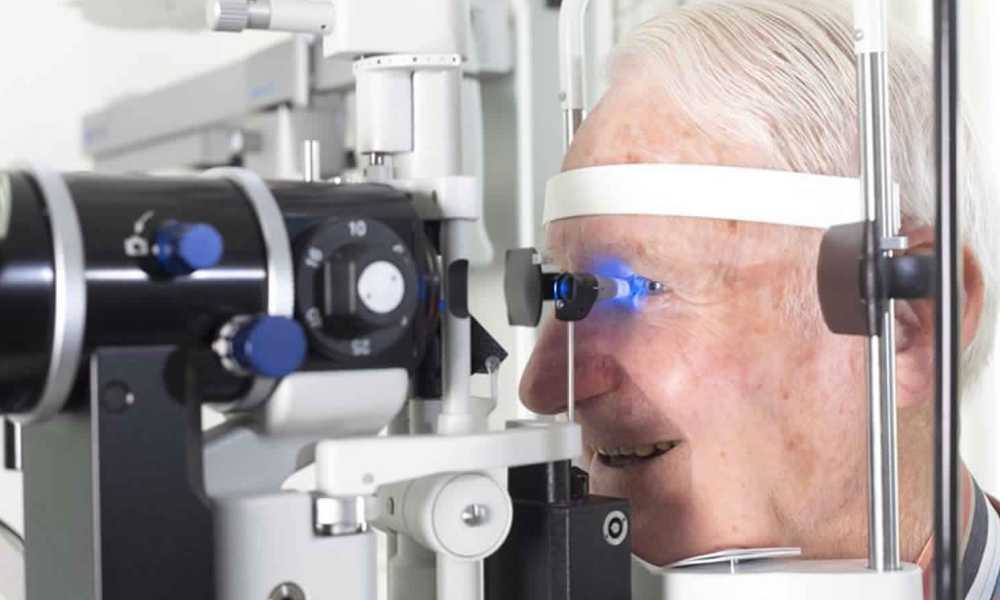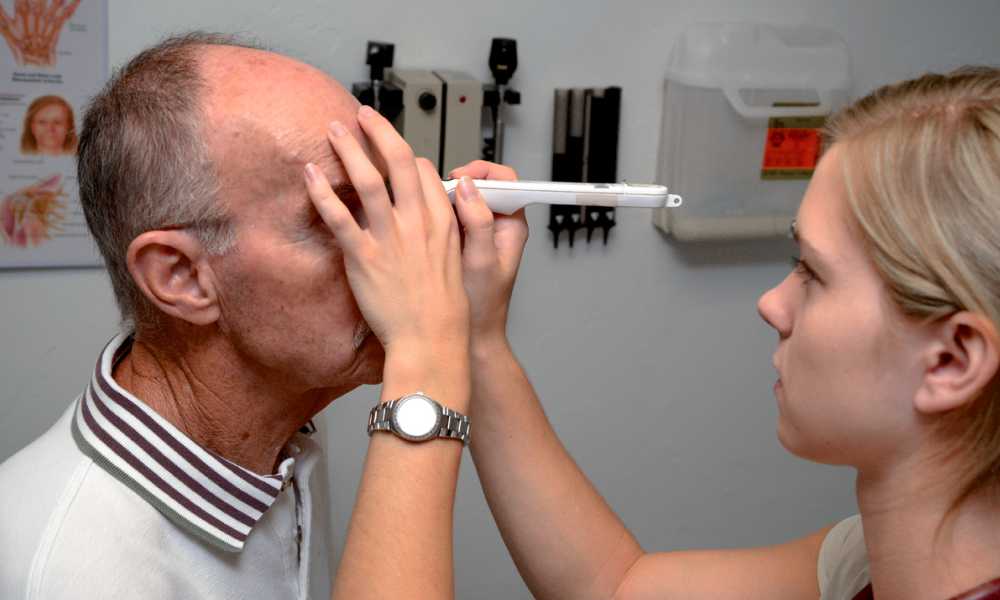Our eyes are filed with various types of fluid that bathes and nourishes the eye and drains out of the chambers with new fluid being formed. In some cases, the fluid drains too slowly, causing pressure build-up. Tonometry uses a device called tonometer to measure the pressure inside the eye. This pressure is actually the ratio between the amount of aqueous humour produced in the eye and the ease with which it leaves the eye.
The most common forms of the tonometry tests are listed below.
Goldman Tonometry
In this method, a Goldman applanation tonometer is used that uses a probe to put slight pressure on the surface of the cornea. The pressure with which the cornea pushes back is measured in terms of millimeters of mercury and is recorded by the doctors. This method provides the most accurate results and is also termed as applanation tonometry. It uses the Imbert-Fick mathematical principle to measure the pressure inside an ideal dry, thin-walled sphere.
Non-Contact Tonometry
This method is also called as air-puff tonometry and the applanating force is a gentle puff of air which is emitted with gradually increasing intensity to flatten the cornea. Even though the results produced are not as accurate as those from a Goldman tonometer, it delivers a fast result for children and sensitive adults.


Electronic Tonometry
This method uses a handheld, mobile device that an eye doctor can carry around with him to check eye pressure as required. The battery-powered device is often termed as the tono-pen. It uses a tiny plunger protruding microscopically from the center to take multiple readings from which an average result is derived.
In many cases, a rebound tonometer, which is also a handheld, battery-powered device, is used. It uses a plastic ball connected to a steel wire which is operated by a spring. The deceleration of the ball as it touches the cornea is measured and converted by the device into IOP.
Glaucoma is one of the most common eye-related ailments in India with more than 1 million cases being registered each year. This wide-spread ailment leads to a loss in vision and ultimately to blindness. The link between intraocular pressure (IOP) and glaucoma has been established for a long time and has remained as one of the prime factors in the diagnosis and treatment of the disease. A build-up of the IOP causes gradual damage to the optic nerve that transmits signals to the brain and leads to glaucoma.
Glaucoma is now considered a disease of the optic nerve and five different tests are used for the comprehensive diagnosis. In general, tonometry and ophthalmoscopy are the two major tests used for making a diagnosis and for regular glaucoma check-ups.
There are various causes of an increase in IOP, resulting in the damage of the optic nerve. The basic cause can be related to a problem regarding the drainage of fluids from the eye due to a variety of factors. Your doctor can suggest checking the IOP through tonometry in case he suspects the development of glaucoma.
Since glaucoma is a silent disease, many people are affected by it without being aware. With time it can affect the peripheral vision, leading further to tunnel vision and finally resulting in blindness. There are a few factors that can increase your risks for developing glaucoma.
– The chances increase with age, especially when you are above 50.
– In case you have a family history of glaucoma or other congenital disorders.
– If there had been some injury in the eye.
– If you have diabetes or hypothyroidism.
– Those who are far-sighted or near-sighted have higher risks.
– Individuals who have used corticosteroid medications for long periods.
– The excessive pigment in the front or anterior segment of the eye.
In case you have one or more of the following symptoms, it is best to get yourself checked for glaucoma.
– A gradual loss of peripheral vision
– Eye pain or reddening of the eye.
– Blurred vision or viewing halos around lights.
– Vision problems in dim light conditions.
The Goldman tonometry test, which provides the most accurate results, involves the following steps.
– The surface of the eye is numbed by eye drops and a fine strip of paper containing a dye is brought in contact with the eye surface. The colored dye stains the entire surface of the eye to provide better test results.
– The doctor then places a “slit-lamp” in front of the eyes and you will rest your chin and head on the supports in the instrument. The lamp is moved forward slowly till the tip of the tonometer probe touches your cornea.
– The doctor observes the cornea through an eyepiece and takes a pressure reading by adjusting a dial.
– Some handheld devices are also used in a similar manner to measure IOP, after applying anesthetic drops in the eyes.
Another common form of non-contact tonometry which is conducted with an air-puff device is performed as described under.
– Your eyes are placed in front of a device that is similar to a “slit-lamp”. When the correct distance from the device is achieved, a tiny beam of light reflects off the cornea to a detector system.
– Then a puff of air is used to slightly flatten an as a small section of the cornea.
– This causes the reflected beam of light to move to a new position on the detector and this deviation is used to take a reading of the IOP.
The charge of the test varies depending on the method and the testing centers in India. The price can range from Rs 200 to 1500.
Tonometry delivers fast results and they can be delivered within a few hours to a day.
The normal intraocular pressure is between 12 and 22mm of Hg as mentioned by the Glaucoma Research Foundation. The unit used to measure pressure here is the “millimeters of mercury”. A pressure reading higher than 20 mm of Hg may indicate the presence of glaucoma. In some cases, an eye injury, blood vessel problems and infections can also result in a higher value of pressure.
Eye pressure is unique for each person and in some cases, glaucoma can occur even within the normal range of pressure.
As mentioned earlier, intraocular pressure is particular for each individual and value of above 22 mm of Hg may not necessarily mean glaucoma. At the same time, lower or normal values do not mean that the patient is free from glaucoma if there are other risk factors present. It is up to a medical practitioner to evaluate the patient’s condition and advise that necessary course of action.
There is no need for fasting while appearing for a tonometry test.
| Dos | Don’ts |
| The best approach is to remain relaxed and calm during the test. | Keep contact lenses on during the tonometry test. |
| Talk to the physician about any allergies that you might have prior to the test. | Wear any restrictive neckwear that might increase the pressure within the eyes. |
| This is a painless procedure so you needn’t worry unnecessarily. | Panic if you feel your eyes numb. It is because of the anesthetic drop. |
There are no restrictions for pregnant women to appear for a tonometry test.
Using a traditional applanation tonometer on the new-borns is quite difficult because of the small size of their eyeballs, their inability to keep the eyes open, and the relatively large size of the prism of the tonometer. A tono-pen device because of its small size and easy handling, is a better choice for getting fast and accurate measurements in babies.
 Glaucoma and tonometry
Glaucoma and tonometry
 How To Properly Use a Tono-Pen
How To Properly Use a Tono-Pen